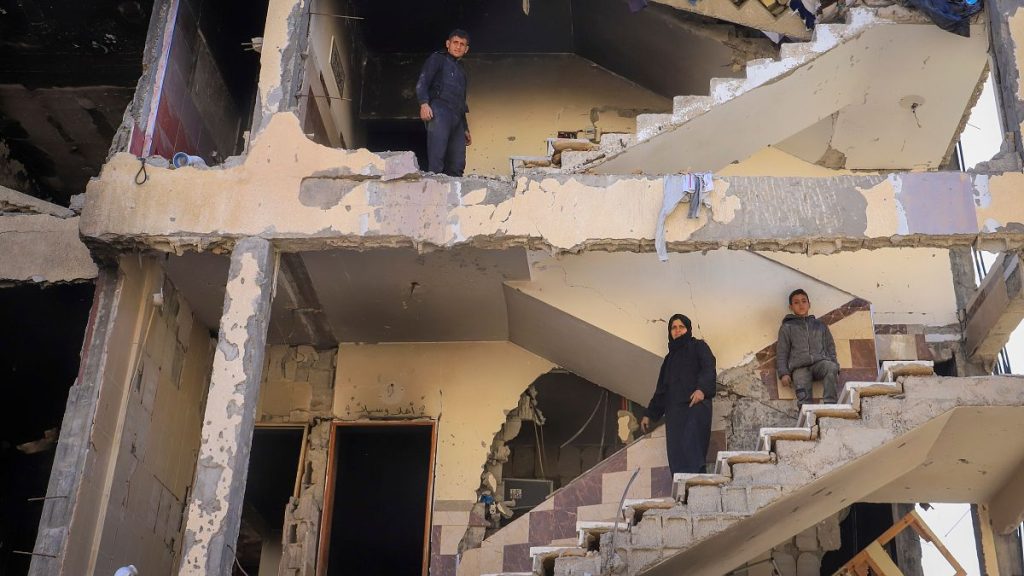Paragraph 1: A Fragile Peace Descends Upon Gaza
A tenuous ceasefire between Israel and Hamas has brought a semblance of tranquility to the war-torn Gaza Strip. After 15 months of relentless bombardment and devastating conflict, the skies fell silent, offering a respite to the beleaguered Palestinian population. For the first time in over a year, Gazans slept peacefully, free from the constant fear of airstrikes and the harrowing sounds of war. The ceasefire agreement, which took effect on Sunday, marks the first significant pause in hostilities since a brief week-long truce in November 2023 facilitated a hostage exchange. While the silence is a welcome reprieve, the scars of war run deep, and the future remains shrouded in uncertainty.
Paragraph 2: The Long Road Home Amidst Devastation
As the echoes of war faded, thousands of displaced Gazans embarked on the arduous journey back to their homes, eager to reunite with loved ones and assess the damage inflicted upon their lives and properties. Many returned to scenes of utter devastation, their homes reduced to rubble and their neighborhoods transformed into landscapes of destruction. The once-vibrant city of Rafah, located in southern Gaza, bore the brunt of the conflict, leaving its residents to confront the heartbreaking reality of their shattered lives. Families trekked through the wreckage, some on foot, others utilizing donkey carts to transport their meager belongings. The physical and emotional toll of displacement weighed heavily on their weary shoulders.
Paragraph 3: A Glimmer of Hope Amidst Uncertainty
The return of displaced families to their ravaged homes is tinged with a mix of relief and apprehension. The fragile ceasefire offers a glimmer of hope, but the long-term prospects for peace and stability remain uncertain. The looming questions of who will govern the devastated territory and how it will be rebuilt cast a long shadow over the future. The United Nations has painted a bleak picture, estimating that reconstruction could take over three and a half centuries if the Israeli blockade remains in place. The scale of destruction is staggering, with over 90% of houses in Gaza either destroyed or damaged. The path to recovery is long and arduous, demanding international cooperation and unwavering commitment.
Paragraph 4: A Lifeline of Aid Arrives
A surge of humanitarian aid has begun to flow into Gaza following the implementation of the ceasefire. United Nations officials report that more than 630 trucks laden with essential supplies have entered the territory, providing a lifeline to the beleaguered population. The focus is on reaching the hardest-hit areas in northern Gaza, where the need is most acute. Aid workers are racing against time to address the dire humanitarian crisis, exacerbated by 15 months of war and stringent Israeli restrictions on aid deliveries and movement within Gaza. The logistical challenges are immense, compounded by lawlessness and looting by armed gangs.
Paragraph 5: Navigating the Complexities of Aid Delivery
Prior to the recent escalation of violence, Gaza endured a crippling Israeli-Egyptian blockade that severely restricted the flow of goods and humanitarian aid. While some 500 trucks carrying supplies were permitted entry daily, the blockade drastically hampered Gaza’s economy and access to essential resources. The initial phase of the current ceasefire agreement aims to significantly increase aid deliveries, with a target of 600 trucks entering the territory each day. This increase is crucial to addressing the immediate needs of the population and laying the groundwork for long-term recovery.
Paragraph 6: A Delicate Balance: Hostage Exchange and Ceasefire
The ceasefire agreement is intricately linked to a delicate hostage exchange between Israel and Hamas. As part of the deal, 33 Israeli hostages held by Hamas will be released in exchange for hundreds of Palestinian prisoners. The first phase of the exchange took place on Sunday, with three Israeli hostages returning home and 90 Palestinian prisoners being freed. The hostage exchange is a sensitive issue, fraught with political and emotional complexities. Its successful completion is vital for maintaining the ceasefire and fostering an environment conducive to long-term peace and reconciliation. The future of Gaza hinges on the delicate balance of humanitarian aid, political negotiations, and the enduring hope for a lasting peace.














